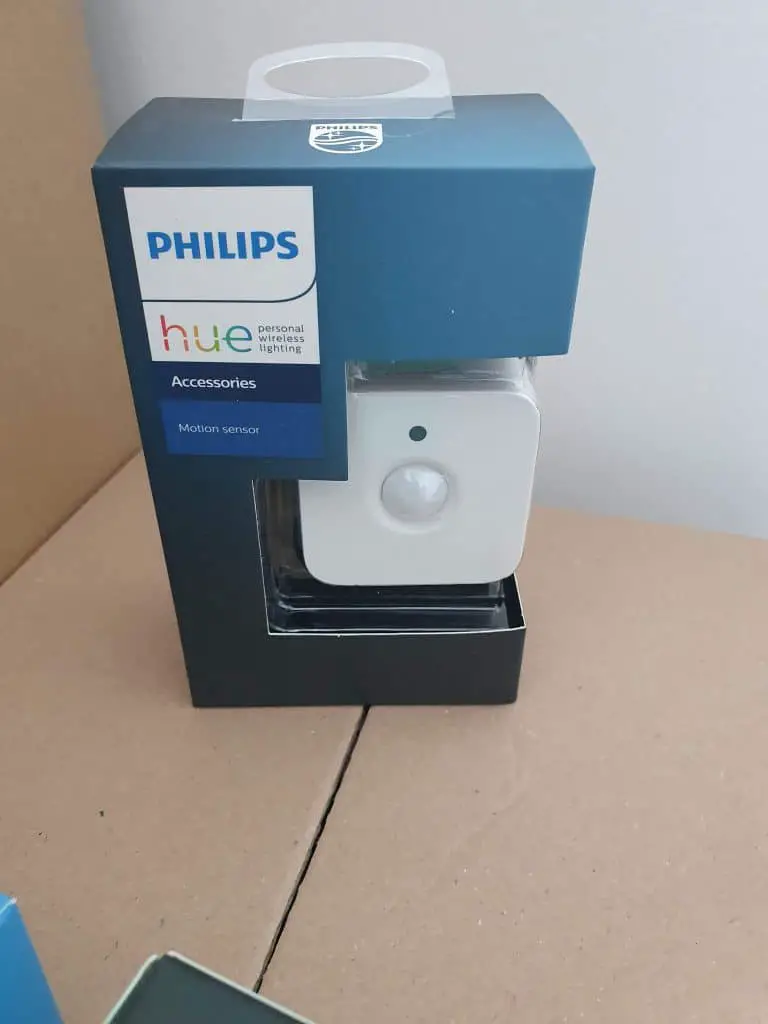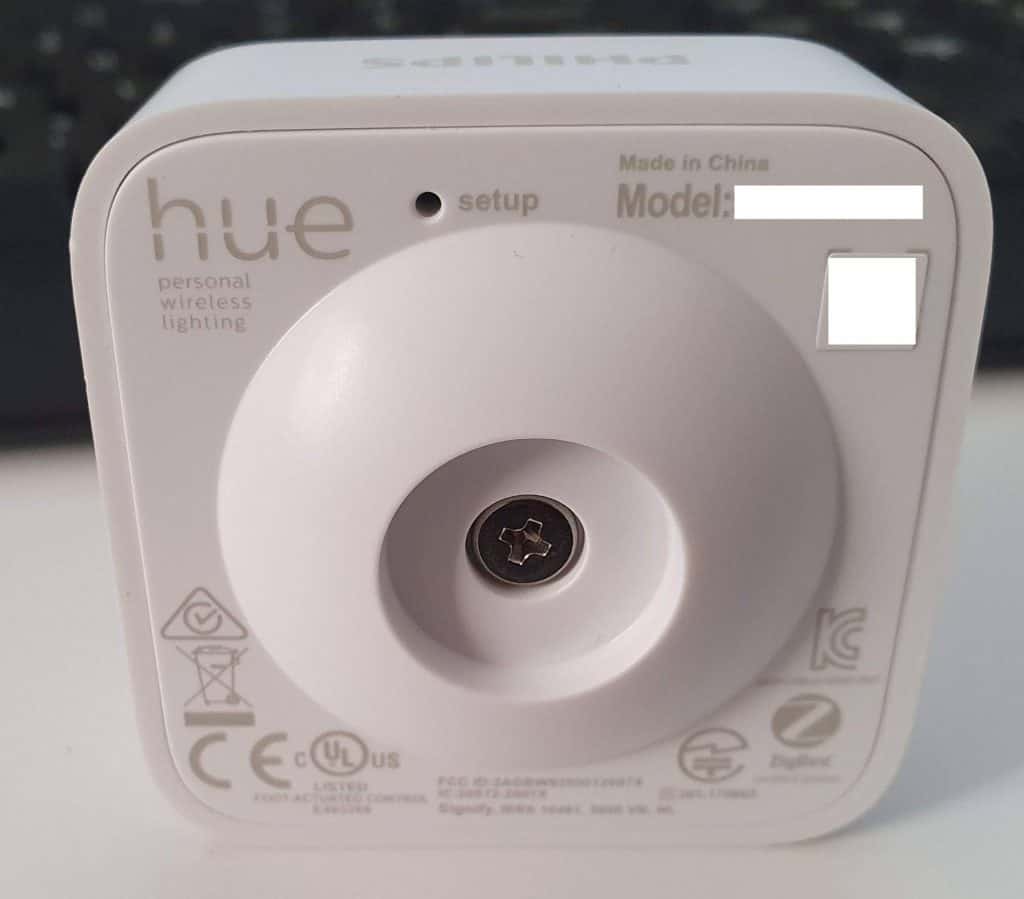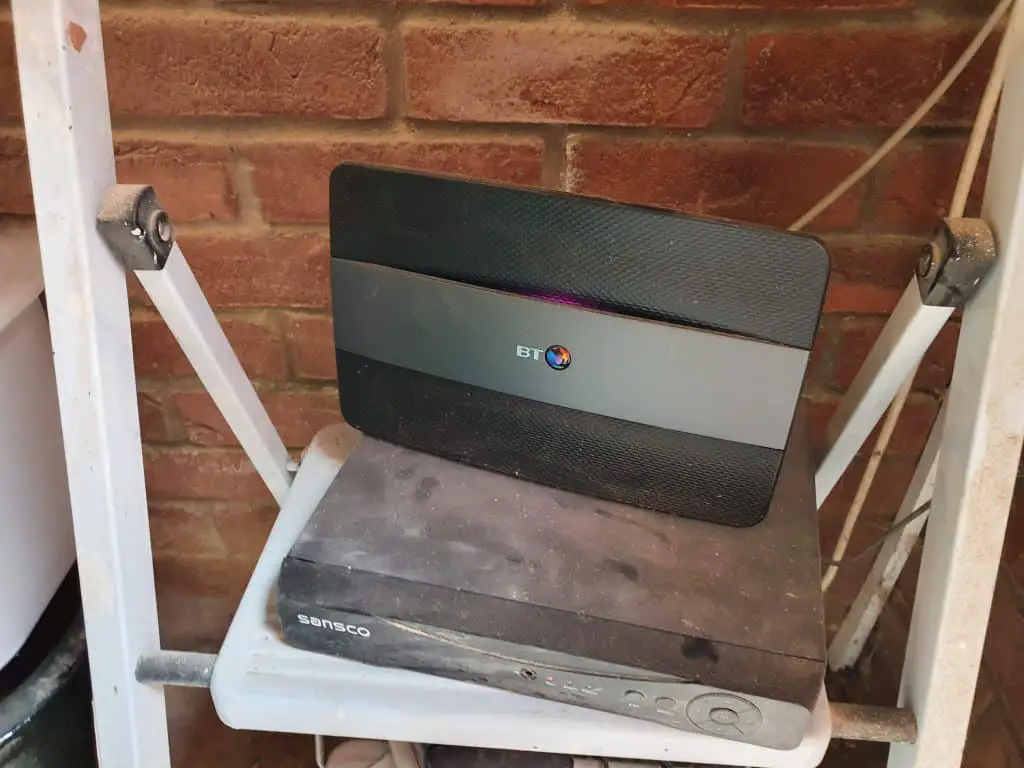Though Philips Hue usually works just fine, their motion sensor can sometimes get crippled with bugs or stop working. This problem can require you to carry out a quick reset procedure. This article takes a deep dive into the Philips Hue motion sensor.
It covers exactly what this smart product is, explains why you’d want to reset it, and walks you through how to do just that, step-by-step. It also brings to your attention some fundamental indoor and outdoor reset differences as well as how to troubleshoot Zigbee vs Wi-Fi interference after resetting your Hue sensor.
What is the Hue Motion Sensor?

It’s an accessory device that automatically turns on your smart lights when it detects human movements. For example, the product will turn your smart lights on as you walk down the hallway or open a door and then turn the lights off again after some time when it no longer detects any movements. It also allows you to fine-tune and gain control over your smart lighting conveniently.
There are many other cool ways in which you can use the Hue motion sensor. These include but are not limited to setting it to;
- Have your lights automatically turn on when you open the main door after reaching home when it’s dark.
- Have your cabinet lights automatically turn on when you open the cabinet doors.
- Activate your exterior lights when it detects human motion at night, potentially scaring away potential thieves.
- Turn on your safety lights such as those around your stairs and railings automatically at night.
This product is offered by one of the biggest names in the smart home technology industry–Philips. The brand became overwhelmingly popular when it started releasing smart lighting systems and accessories such as LED light strips and motion sensors.
The company designs these products to integrate seamlessly with smart home apps like Amazon’s Alexa, Apple’s HomeKit, and Siri, as well as Google’s Smarthome app. It also makes sure that they work well with mainstream smart home technologies such as Matter and other ZigBee products.
Why Would You Want to Reset This Sensor?
The Philips Hue motion sensor will occasionally require some quick factory reset to continue functioning reliably without any issues. Some common problems you can fix by undertaking this procedure include when the sensor has trouble pairing or isn’t communicating with other devices in the network.
Doing a quick reset may also go a long way when the app isn’t recognizing the sensor or when it’s having performance issues like not being sensitive enough or vice versa.
Types of Philips Hue Motion Sensors
Philips Hue offers two types of motion sensors; an indoor motion sensor and an outdoor one. The former is designed exclusively for indoor use whereas the latter is intended for outdoor purposes.
Notably, the steps for resetting both types of sensors vary slightly as shown below:
How To Reset Your Philips Hue Indoor Motion Sensor

- Step #1: Remove the motion sensor from your Hue app simply by deleting it. You can do that by going to Settings>Accessory Setup>Hue Motion Sensor and then tapping on the red Delete button below the screen.
- Step #2: Hold down the setup button for 10 seconds or until the LED light on the front of the sensor starts blinking orange from red, indicating that the sensor is reset and ready to pair again. The setup button is on the back, near the battery slot.
- N/B: The setup button is recessed into a hole in the back of the device and the only way you can access it without trouble is by using a proper tool as we’ll show you in a bit. You’ll see the word “setup” next to where it is and therefore it shouldn’t be so hard to get to it, at least if you know how to read. That means you’ll need something like a screwdriver or paper clip to reach it. Don’t use a sharp object like a sewing needle as that may damage the button and the sensor.
- Step #3: Close and relaunch your Hue app, returning to the Settings followed by the Accessory Setup menu you earlier went to.
- Step #4: Click “Add Accessory”, choosing the sensor you are trying to add.
- Step #5: Follow the on-screen instructions to complete the reset process.
How To Reset Your Philips Hue Outdoor Motion Sensor
The reset process for the outdoor motion sensors is similar, but has a few key differences:
- Step #1: Remove the motion sensor from your Hue app simply by deleting it. You can do that by going to Settings>Accessory Setup>Hue Motion Sensor and then tapping on the red Delete button below the screen.
- Step #2: Hold down the setup button for 10 seconds, or until the LED light on your sensor starts blinking orange from red, indicating that the sensor is reset and ready to pair again. N/B: Unlike the setup button for the indoor sensor that is recessed into a hole, this button is hidden behind the mounting bracket found at the back of the sensor. That means you’ll have to remove the bracket to get to it.
- Step #3: Close and relaunch your Hue app, returning to the Settings followed by the Accessory Setup menu you earlier went to.
- Step #4: Click “Add Accessory”, choosing the sensor you are trying to add.
- Step #5: Follow the on-screen instructions to complete the reset process.
Zigbee Clashes with Wi-Fi Signal After Sensor Reset (& How To Troubleshoot This)

Now, ZigBee is the wireless protocol that Hue smart devices use to communicate. Interestingly, both Zigbee and Wi-Fi run on one GHz band–the famous 2.4 GHz band. However, each communication protocol runs on different radio frequency channels within the 2.4 GHz spectrum.
For example, Zigbee runs on sixteen different RF channels that are denoted by numbers; 11, 12, 13, 14, 15, 16, 17, 18, 19, 20, 21, 22, 23, 24, 25 and 26. On the other hand, Wi-Fi runs on fourteen RF channels that are again denoted by numbers: 1, 2, 3, 4, 5, 6, 7, 8, 9, 10, 11, 12, 13 and 14.
As you can see, Zigbee and Wi-Fi share some RF channels i.e channels 13, and 14. That means there can be some signal interference for your Hue devices if other devices are running on Wi-Fi.
Fortunately, you can fix this issue by changing the Zigbee channel of your Hue Bridge. You should select channels 15 and above, which are beyond Wi-Fi. Just go to your Hue app and follow the simple on-screen instructions to do that (go to Settings, ‘Hue Bridge’ or ‘Your Hue System’, then click Advanced Settings).
Final Thoughts
Philips Hue motion sensor is a cool sensor that automatically controls your Hue smart lights perfectly. The company offers two kinds of motion sensors; the indoor sensor that is used indoors and the outdoor sensors that are intended for outdoor usage.
Both sensors can occasionally need resetting, especially if they become buggy. As you’ve seen, the reset steps for each sensor vary slightly and therefore users should know which reset steps their sensor requires.
After resetting your sensor, the device may run into some problems due to Zigbee vs Wi-Fi interference issues. The good news is that you can troubleshoot that problem by switching to the right Zigbee channel as explained above.
